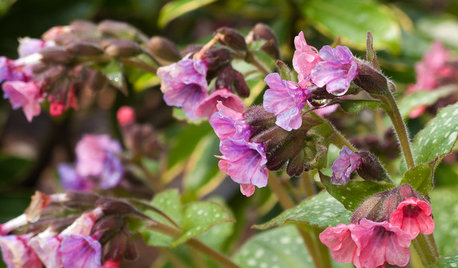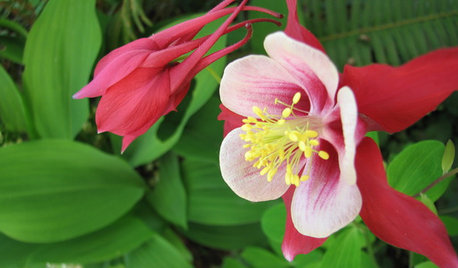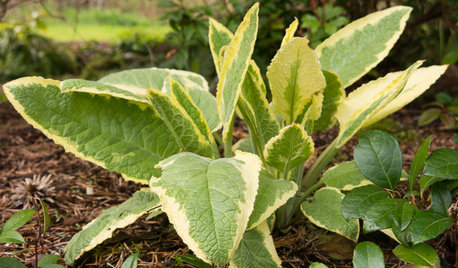A hosta by any other name...
might still smell as sweet...
but as long as we are using names, we might just as well use them correctly. I recently made some comments involving genus, species, and cultivars... and people who have negative flashbacks about tenth grade Biology glazed over a little,
So at the risk of sounding like that uptight ninth grade English teacher we didn't like... here's a quick primer on hosta naming. I know this is "old hat" for many of you - you are dismissed!
All the plants we call hostas fall into one category in the system of biological nomenclature. The whole group is a "Genus" - the Genus Hosta.
In nature, groups of plants develop and grow in natural populations. Through variations and selections, populations in different areas will evolve into different identifiable populations. They are all still hostas, but one type of identifiable hostas might be growing on a Korean island and evolve differently from a population of hostas growing on a mountain in China. We call these naturally occuring populations "Species."
As hostas are domesticated, occasional departures from the species are found. The new plant might be a hybrid of two or more species due to pollination of a flower and seed setting, or it might be a mutation (sport). That plant doesn't automatically become its own species. It is a specially cultivated plant... and we call it a "Cultivar."
Using the traditional horticultural naming process, we can just call a plant a "Hosta" if all we care about is that it belongs to the genus. So...
Hosta
If we wish to give more information... and who wouldn't want to be more precise? ... we use a second word. If a plant is a hosta and it is a member of one of the species, then we would name it by using two words... first the genus, which is capitalized, followed by the species name in lower case... note that we don't use any punctuation for this plant. So...
Hosta sieboldii
Hosta longipes
Hosta laevigata
Basically, you could go out "in the wild" and find populations of those hostas growing without the intervention of gardeners.
When we select and cultivate a particular hosta, we create a cultivar. We indicate that it is a cultivar by stating the genus (capitalized) and the name of the cultivar (capitalized and in single quotation marks.) So...
Hosta 'Little Doll'
Hosta 'Xela'
Once in a while, you'll see a hosta cultivar name that tells you it was selected or developed from a particular species... so the name has three words... the genus (capitalized), the species (not capitalized) and the cultivar name (capitalized and in single quotation marks) This seems to be falling out of fashion, and people seem to be ignoring Zilis' effort in the Handbood to encourage more of it, but he lists lots of these in his index. So...
Hosta sieboldiana 'Borwick Beauty' (Zilis is the only one I know who indicates the species on this one... everybody else seems to just call it H. 'Borwick Beauty.")
Hosta fluctuans 'Variegated' (newer name for this hosta is H. 'Sagae'... though many still have trouble pronouncing it, it is WAY easier to sell under the simpler name.
If you are listing a bunch of plants from the same genus, you only have to use the whole genus name the first time, then further references can be just the first letter, capitalized with a period after. Sooo....
Hosta clausa
H. 'Fool's Gold'
H. 'Kisuji' (which, by the way, used to be called H. tardiva aureo-striata... which means the genus hosta, the species tardiva, and a particular strain of that species that is aureo-striata (yellow striped)... but honestly, isn't just plain 'Kisuji' nicer?)
And one final category. Sometimes plants have a common name that people have used, often for centuries, without any concern about what the people writing books called them. Hostas, for example, have a common name - "plantain lily." Common names, when used, should have a double quotation mark. Perhaps the most famous one of these in the hosta world is H. fortunei 'Aureomarginata' (aka H. 'Fortunei Aureomarginata... don't even ask!) which for many years was given the common name Gold Crown. When I want to refer to its common name, I call it H. "Gold Crown" to clearly indicate that it isn't registered or properly listed under that name... but people still commonly use it.
I also use this convention for naming sports in my garden... so you might see a label saying H. "Sport of fortunei 'Hyacinthina'" or a madeup name for a hosta I'll never register H. "Shejim" (We are Sheila and Jim, so our first sport, a viridescent, streaky Honeybells... ah, vanity!)
So why should anybody care?! On the forum, we usually skip the Hosta, skip the H., skip the single quotation marks so H. 'Kisuji' becomes just Kisuji.
but recently, somebody asked if Grandaddy Redlegs is the same hosta as lancifolia. Though there is some controversy about whether lancifolia is a true species, or a cultivar that was reproduced so often in the last two-plus centuries that it just seems to be a species... we know that H. lancifolia (or H. 'Lancifolia') has quite a different heritage from Grandaddy Redlegs. How do we know? Because Zilis tells us that GR is a seedling from H. longipes hypoglauca... which has it coming from an altogether different species. longipes is the species that gives us all those red and purple stems we see bred into so many new cultivars. (and don't ask me to pronounce it... have never gotten that one right in my life!)
I can't imagine anybody is still reading this, but if you are... thanks! We don't usually need to worry too much about precision in our naming... but a little like understanding the use of the salad fork, isn't it nice to know how to do it right when we need to?!
Class dismissed! don't forget to bring a Malus domestica 'Borkh' (domesticated apple) for the teacher tomorrow!
Posted by jghartmann













Related Discussions
Midwest Regional Hosta Society Convention
Q
What's in a name? Hosta taxonomy
Q
what was the 2009 convention hosta
Q
Have you been to a hosta convention?
Q